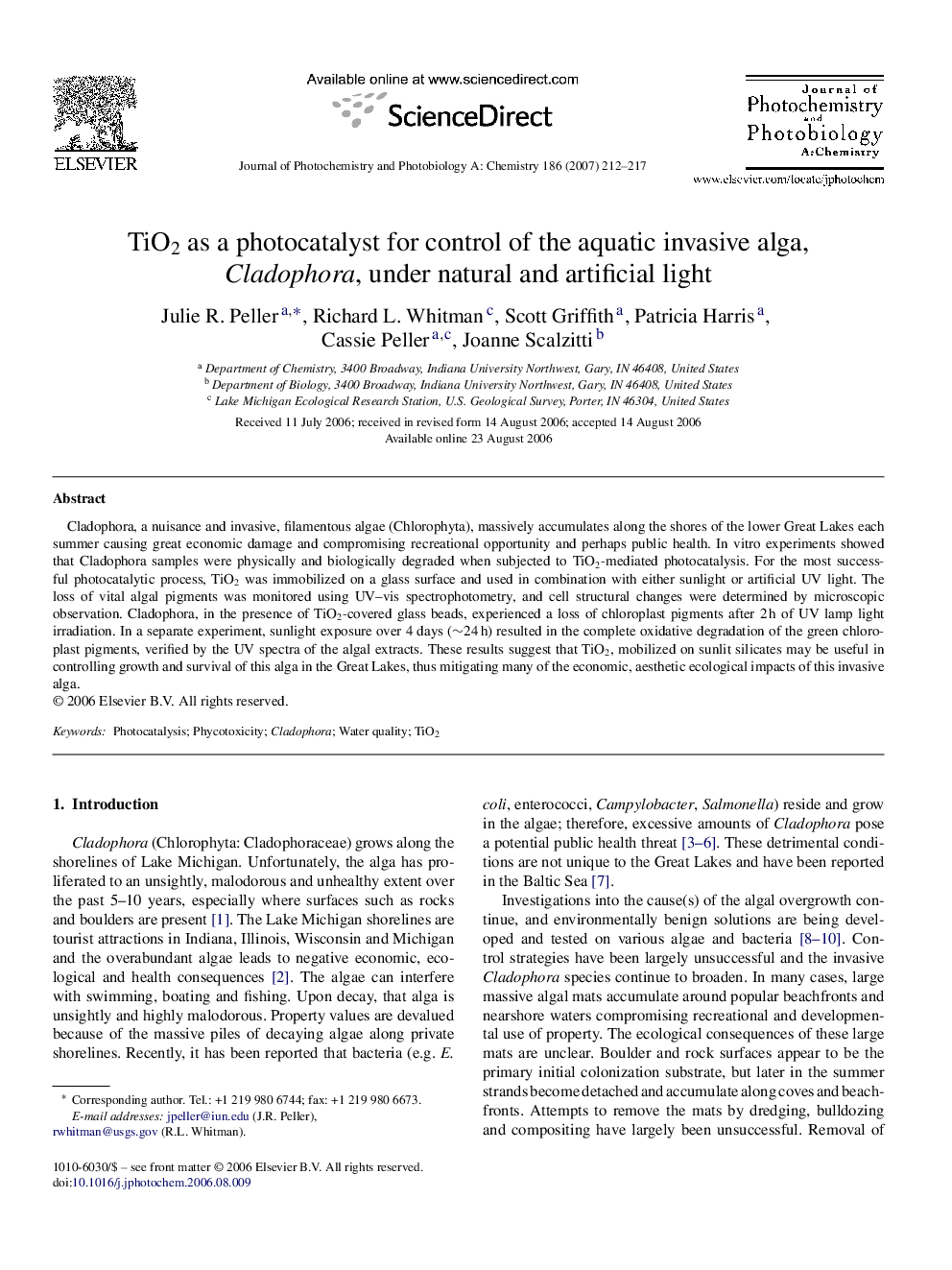| Article ID | Journal | Published Year | Pages | File Type |
|---|---|---|---|---|
| 28351 | Journal of Photochemistry and Photobiology A: Chemistry | 2007 | 6 Pages |
Cladophora, a nuisance and invasive, filamentous algae (Chlorophyta), massively accumulates along the shores of the lower Great Lakes each summer causing great economic damage and compromising recreational opportunity and perhaps public health. In vitro experiments showed that Cladophora samples were physically and biologically degraded when subjected to TiO2-mediated photocatalysis. For the most successful photocatalytic process, TiO2 was immobilized on a glass surface and used in combination with either sunlight or artificial UV light. The loss of vital algal pigments was monitored using UV–vis spectrophotometry, and cell structural changes were determined by microscopic observation. Cladophora, in the presence of TiO2-covered glass beads, experienced a loss of chloroplast pigments after 2 h of UV lamp light irradiation. In a separate experiment, sunlight exposure over 4 days (∼24 h) resulted in the complete oxidative degradation of the green chloroplast pigments, verified by the UV spectra of the algal extracts. These results suggest that TiO2, mobilized on sunlit silicates may be useful in controlling growth and survival of this alga in the Great Lakes, thus mitigating many of the economic, aesthetic ecological impacts of this invasive alga.
